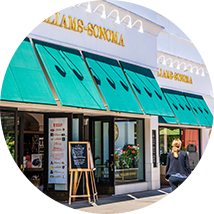
How the Cost of Auto Body Repair is Impacting Auto Insurance Rates
The cost of auto body work is influenced by several factors, which contribute to the overall expense and, consequently, to rising auto insurance rates. Here are the key reasons why body work is so expensive and how it impacts insurance rates:
Factors Increasing the Cost of Body Work
- Advanced Vehicle Technology:
- Materials and Construction: Modern vehicles often use advanced materials like aluminum, carbon fiber, and high-strength steel, which are more expensive to repair or replace than traditional materials.
- Sensors and Electronics: Modern cars are equipped with sophisticated electronic systems, sensors, and advanced driver assistance systems (ADAS). Repairing or recalibrating these components requires specialized equipment and expertise, increasing repair costs.
- Labor Costs:
- Specialized Skills: The complexity of modern vehicles necessitates highly trained technicians who command higher wages.
- Time-Consuming Repairs: Intricate repairs, especially those involving advanced materials and electronics, are more time-consuming, leading to higher labor costs.
- Parts Costs:
- OEM Parts: Using original equipment manufacturer (OEM) parts ensures compatibility and safety but is often more expensive than aftermarket parts.
- Supply Chain Issues: Global supply chain disruptions can lead to parts shortages and increased prices.
- Regulatory Compliance:
- Environmental Regulations: Compliance with environmental regulations, such as proper disposal of hazardous materials, adds to the operational costs of repair shops.
- Safety Standards: Meeting stringent safety standards requires specialized procedures and equipment, increasing costs.
Impact on Auto Insurance Rates
- Higher Repair Costs:
- When the cost of repairs rises, insurance companies face higher claim payouts. To maintain profitability, they increase premiums for policyholders.
- Increased Total Loss Thresholds:
- As repair costs increase, cars are more likely to be deemed total losses when repair costs approach or exceed the vehicle’s value. This can lead to higher payouts for total loss claims, further driving up insurance rates.
- Comprehensive and Collision Coverage Costs:
- The premiums for comprehensive and collision coverage are directly influenced by the cost of repairing or replacing a vehicle. Higher repair costs lead to higher premiums for these types of coverage.
- Fraud and Increased Claims:
- Higher repair costs can sometimes encourage fraudulent claims or inflated repair bills, leading to increased scrutiny and administrative costs for insurers, which are then passed on to consumers in the form of higher rates.
- Market Dynamics:
- As repair costs rise uniformly across the industry, insurance companies adjust their rates to reflect these increased costs, contributing to an overall rise in auto insurance premiums.
In summary, the combination of advanced vehicle technology, specialized labor, expensive parts, and regulatory compliance significantly increases the cost of auto body work. These increased repair costs lead to higher insurance claim payouts, prompting insurers to raise premiums to cover the additional expenses. This cycle contributes to the overall increase in auto insurance rates.
Categories: Blog






